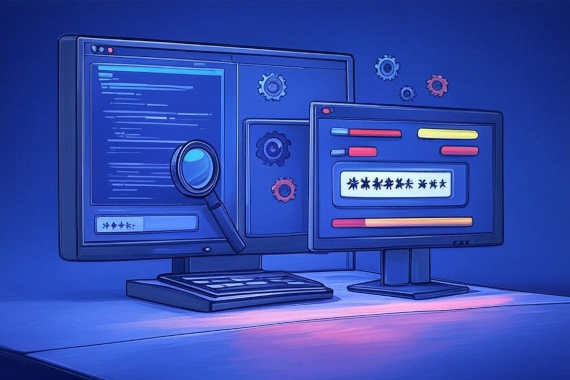
Threat Intelligence Management
Dark Web Monitoring Threat Intelligence Best Practices
What is Threat Intelligence Management? Threat intelligence management enables companies to understand their threat …

Do you have a detailed data breach response plan in case of a breach? Wondering what you need to do in case you get hacked?
According to the IBM Cost of a Data Breach 2023 Report, only one-third of companies studied discovered the data breach through their own security tools.
67% of breaches were reported by the attackers themselves or a benign third party.
The study also showed that when the attackers disclosed the breach, it cost organizations nearly USD 1 million more when compared to when the organization discovered the breach themselves.
Clearly, having a proper data breach response plan can significantly affect your bottom line.
In this article, you’ll learn the five steps needed in every data breach response plan.
A data breach response plan is the documented strategy defining the steps an organization needs to take before, during, and after a data breach. The document outlines what constitutes a breach, which personnel are involved in the plan, their contact details, and the steps they need to take. The goal of the plan is to minimize the damage caused by the breach and to protect sensitive information from further unauthorized access or exposure.
In many ways, your business’s short- and long-term recovery depends on how it handles the breach.
Beyond maintaining your organization’s reputation and customers’ trust, mishandling a breach can result in fines, increased legal fees, and victim compensation.
In addition, depending on your jurisdiction, various data protection laws and regulations may require you to report the breach within a specific timeframe and to take certain actions to mitigate the impact.
Studies have shown significant cost differences for breaches that are resolved quickly.
Having a comprehensive data breach response plan enables you to contain the breach and begin the recovery process sooner, which helps minimize downtime and operational disruptions.
During a breach, multiple response teams are needed, each with specific roles and responsibilities.
While the specifics may be dependent on your organization and the type of breach, here is a breakdown of the essential teams and their responsibilities:
Incident response team: This is the primary team and is responsible for leading the assessment, containment, and mitigation efforts. It should include a manager to coordinate between the teams, as well as representatives from the IT team, legal counsel, and a communications or PR specialist.
Executive management team: This team provides oversight and strategic direction for handling the breach, ensuring that the response aligns with organizational goals and legal requirements. It should include the CEO, CFO, COO, and CISO/CSO.
Legal and compliance team: This team is focused on addressing the legal, regulatory, and contractual obligations triggered by the data breach. It should include the general council, compliance officers, as well as any external legal advisors if needed.
Communications team: This team is responsible for managing all communications related to the breach, including crafting messages for employees, customers, partners, and the public. It should include the organization’s communications director, public relations specialists, and a customer service representative.
Cybersecurity team: This team works closely with the Incident Response Team to analyze the breach, secure systems, and implement improvements to prevent future incidents. It should include the IT director, forensic analysis specialists, and network administrators.
Human resources team: This team addresses the internal impacts of the breach, focusing on employee communications and support. It should include the HR manager and an employee relations specialist.
The goal of a risk assessment is to identify the internal and external situations that could negatively impact your organization.
The first step is to identify the types of data assets you hold. This includes both physical and digital data, with a focus on sensitive and personal information that your organization holds, processes, or transmits.
Next, classify the data and assets based on their sensitivity and value to the organization. This could range from public information to highly confidential data.
For each asset, identify the potential threats (e.g., cyberattacks, human error, natural disasters) and vulnerabilities (e.g., outdated software, weak passwords).
Evaluate the likelihood of each identified threat, considering factors like the current threat landscape, the effectiveness of your existing controls, and historical data.
Determine the potential impact of each threat materializing, considering factors such as the sensitivity of the data, regulatory implications, financial loss, and reputational damage.
Now, combine the likelihood and impact assessments to calculate the overall risk for each scenario. This can be qualitative (e.g., high, medium, low) or quantitative (using a specific risk calculation formula).
For the highest risks, identify mitigation strategies that can reduce either the likelihood, the impact, or both. Strategies can include improving technical controls, updating policies, employee training, etc.
Although the specifics will differ on a case-by-case basis, every response procedure should include:
Identification and Analysis: Identify which systems were affected, the type of data compromised, and the number of records exposed. Analyze the logs, systems, and network traffic to trace the attacker’s steps and identify the entry point.
Containment: Isolate the affected systems to prevent the spread of the breach. This can mean completely disconnecting the systems from the internet, disabling remote access, or simply segregating parts of the network.
Remediation and Recovery: Restore the infected systems and data from backups. Before bringing systems back online, validate the integrity of the data.
Notification and Communication: Provide clear, concise, and jargon-free information to help the victims understand what happened, what data was involved, the potential risks, and what they can do to protect themselves.
Post-Incident Analysis and Improvement: After the event, review how the breach occurred, the effectiveness of the response, and identify any lessons learned. Determine if new solutions or upgrades are required to better protect against future breaches.
RECOMMENDED READING: Data Breach Mitigation: A Guide for Security Teams
Research and understand the legal and regulatory requirements for data breach notifications in your jurisdiction. This includes knowing who needs to be notified (e.g., affected individuals, regulators), the information that must be included, and the timeframe for notifications.
Identify all potential audiences who need to be informed about a data breach, including internal stakeholders (employees, board members), external stakeholders (customers, partners, vendors), regulators, and, in some cases, the general public.
Create notification templates for each audience. Templates should include an explanation of what happened, the type of personal data involved, the implications of the breach, what you’re doing in response, actions recipients can take to protect themselves, and contact information for further questions.
Develop a communication plan that defines who gets notified first, the modes of communication, the timeline for each phase of communication, who’s responsible for drafting, reviewing, and approving communications, and the procedure for updating stakeholders as new information becomes available.
Draft press releases and FAQs to address potential public and media questions. These should provide a clear overview of the situation, what’s being done in response, and advice for the affected individuals.
Finally, identify and train designated spokespeople who will communicate on behalf of your organization. This includes media training for handling press inquiries and public statements.
A plan without practice isn’t very helpful.
Conduct regular breach simulations to test the effectiveness of your response plan and the readiness of the response teams.
Use the exercises to identify gaps or weaknesses in the plan and update accordingly.
Data breaches can happen to anyone. Having a solid data breach response plan is key to minimizing the effects of a breach. It’s crucial that the plan is both practical and highly actionable. It should be tailored to your organization’s specific needs and capabilities. The one common denominator for organizations that have successfully recovered from a large-scale breach is that they all had a response plan in place, and each member of the response team was well-versed in what they needed to do.

Dark Web Monitoring Threat Intelligence Best Practices
What is Threat Intelligence Management? Threat intelligence management enables companies to understand their threat …

Dark Web Monitoring Threat Intelligence Best Practices
What is a Cyber Threat Monitoring Tool? A cyber threat monitoring tool alerts security teams to potential threats before …